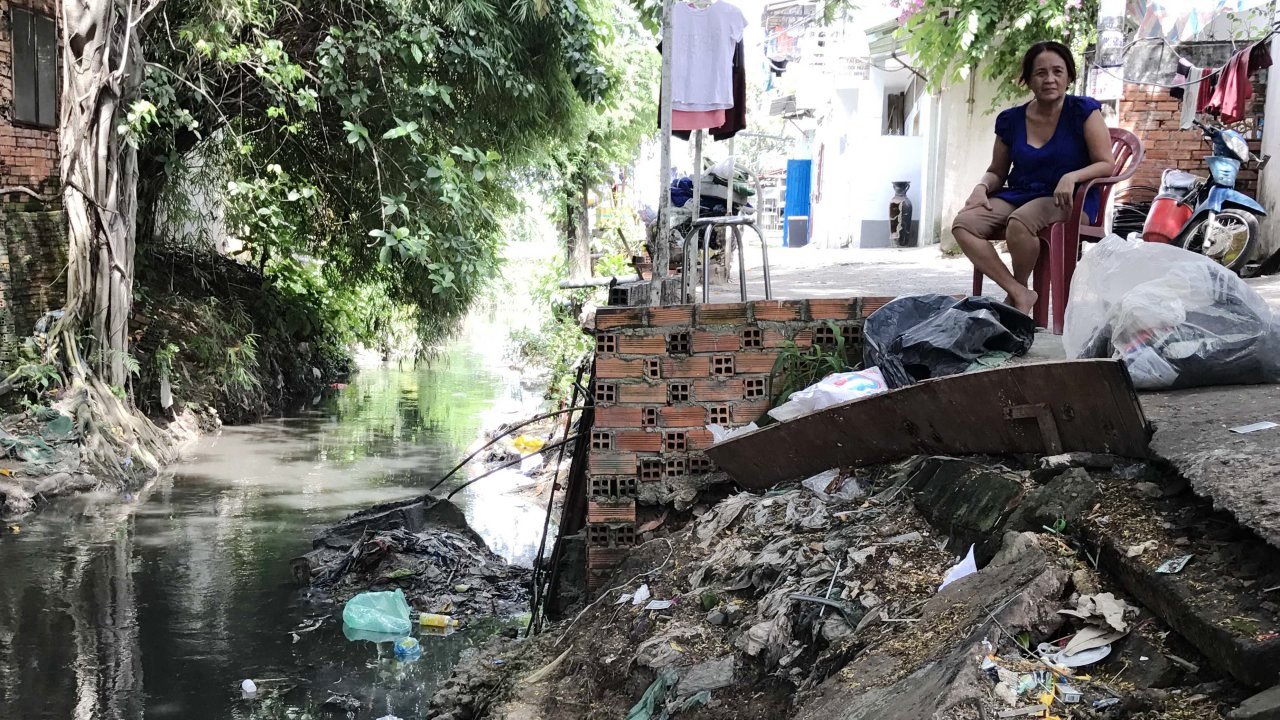Authorities in Ho Chi Minh City are now uncertain about how to mobilize capital for major anti-flooding projects after the World Bank ended its official development assistance (ODA) last month.
The municipal People’s Committee and the WB in June agreed to terminate the US$400 million in ODA for the Tham Luong-Ben Cat-Nuoc Den Canal project, causing it to be halted halfway.
The plan to renovate Hy Vong Canal, which is intended to alleviate inundation in Tan Son Nhat International Airport in Tan Binh District, is also affected by the cut.
The canal renovation was expected to give the city a facelift and improve the lives of two million residents in eight districts.
The first phase of the project has been finished, which included dredging the canal bottom and building roads along the waterway.
The second phase involves the construction of tidal drainage facilities at two ends of the canal and a pipeline system to direct wastewater to a treatment plant in Tan Phu District.
These components were anticipated to be carried out in the 2017-20 period, as long as the ODA package would be provided by the WB.
Regarding the Hy Vong Canal project, Tran Dang Nghia, an official from the Steering Center of the Urban Flood Control Program, stated it is the only solution to flooding at the airdrome as previous measures did not work.

This map shows the waterway along which the Tham Luong-Ben Cat-Nuoc Den Canal project is carried out. Photo: Tuoi Tre
In order to expedite the plan following the ODA termination, the center has asked the municipal People’s Committee to fund the implementation with the local budget.
The project involves the upgrade of the 1.85-kilometer-long Hy Vong Canal at a cost of VND488 billion ($21.4 million).
It is necessary that the municipal administration resume the project using funds from the local coffers as rain-triggered flooding is now an urgent issue at Tan Son Nhat International Airport, Nghia said.
Meanwhile, resuming the Tham Luong-Ben Cat-Nuoc Den Canal project, which costs some VND10 trillion ($439.1 million), will require investment from the private sector, said Nguyen Ngoc Cong, director of the Steering Center of the Urban Flood Control Program.
An official from the Ho Chi Minh City Department of Transport suggested that authorities focus on seeking investment from international organizations that are interested in anti-flood programs.
Mobilizing resources from the private sector would not be easy as the project does not generate any income for it, the official said.
Priorities should be directed to building the two tidal drainage systems first as they would play an essential role in dealing with inundation in the city, he recommended.
Like us on Facebook or follow us on Twitter to get the latest news about Vietnam!






















































